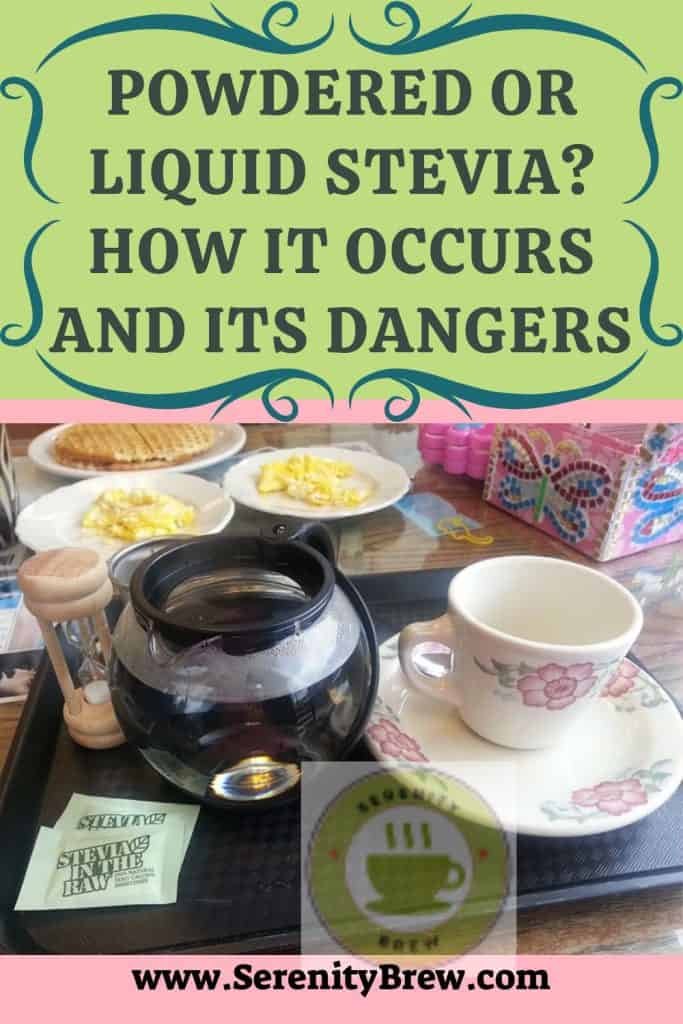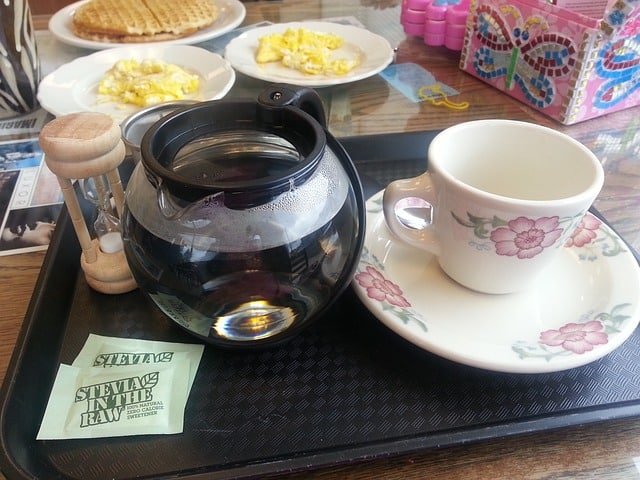
Nature is in charge of creating each food in perfect balance for each and every one of us, it is wise enough to give us everything we need. We see an example of this in how stevia is gaining more popularity every day; This sweet little plant from the Paraguayan jungle is used both medicinally, for diabetics or to sweeten food and drinks.
In its natural form it is 200 to 300 times sweeter than refined sugar and contains no sodium, no calories and no carbohydrates. It is an absolutely healthy sweetener full of properties and benefits for our body.
With its popularity, various ways of consuming it have been created: capsules, powder, liquid, macerated, fresh leaves and dried leaves. It is easy to plant, which is why many have their own plant at home or buy it in herbalists or directly online, it is already a massive product and very easy to obtain.
Is stevia 100% natural in all its formats?
If you think that buying stevia does not contain any mystery, you may be in for a surprise and that is that not everything that is marketed as stevia is really natural. Stevia is an herb that does not require any refinement or process, since it is sweet in itself, but on many occasions, it is processed, refined and even flavored.
Today there are many types of preparation and to differentiate chemical stevia from natural stevia, you simply have to look at the label and see the components, if it has additives or complementary ingredients, it is chemical stevia, since as we said before, stevia does not require processing, so it is easy to distinguish natural from non-natural.
Sweeteners that contain additives or artificial ingredients, which claim to have some percentage of stevia, lack properties and benefits for our health (whether in powder or liquid), on the contrary, they are full of negative side effects for our body, here are just some:
- · Brain injuries
- Decreased number of red blood cells and anemia
- · Elongated and calcified kidneys
- · Increase in mortality
- male infertility
- · Miscarriages in rabbits
- · Obesity
- · Anxiety
- Addiction
- · Cancer
On the other hand, stevia in its natural form has endless properties and benefits apart from sweetening our cups of tea, coffee or food.
- It has no calories, sodium, carbohydrates or caffeine
- It has favorable effects on the absorption of fat
- · Benefits blood pressure with a mild diuretic, vasodilator and cardiotonic effect
- Highly recommended for diabetic patients
- Regulates sugar metabolism (Hypoglycemic)
- · Natural anxiolytic
- Lowers cholesterol levels (hypocholesterolemic)
- Improves memory, concentration and learning
- Facilitates digestion
Stevia powder
In many places we can find green or white stevia powder, in the case of white powder it is chemically processed, although it retains part of its properties, it is not the same as green stevia powder, it is a highly concentrated extract and indicted.
Many brands that market stevia as a white powder use maltodextrin , which is what simple sugar contains, as a food additive. In the first instance it is used to reduce the strong sweetness-bitterness of the stevia extract.
On the other hand, there are brands that, apart from adding this additive, also add aqueous erythritol, ethanol, chloroform or hexane, among others , its function is to be a kind of filler, to make it lighter, finer and more profitable, this means that the The percentage of stevia that is being consumed is very little, generally 5%, finally the change in color from green to white is also quite questionable.
Green stevia powder, it is the whole stevia leaf, dried at low temperatures and then ground until it is a powder with its characteristic color, it is 100% organic, without sodium, zero calories, without carbohydrates and has no glycemic index .
Unlike white powder, natural powdered stevia can be used not only to sweeten, but also to season different foods, cereals and desserts, as it improves flavor and nutritional value.
In order to differentiate these two types of stevia, apart from having a different color, it is a matter of looking at the product label and reading its components. Also because green powdered stevia has a very long shelf life, in dry environments it is very rare for it to spoil, while the other has an expiration date.
liquid stevia
Liquid stevia is the best way to consume it in a dose, however, if you are not familiar with the use of stevia and want to buy it, you have to pay special attention to the label, basically if it doesn’t just say stevia, that’s it somehow processed or contains some other additive or complementary ingredient.
This is a concentrated aqueous solution that is served in drops, with one or two drops of natural liquid stevia is enough to sweeten a cup of tea or coffee, since given its concentration it sweetens 70 times more than sugar.
1 teaspoon of sugar = 2 drops of Stevia liquid
1 tablespoon of sugar = 6 drops of Stevia liquid
1 cup of sugar = 1 teaspoon of liquid Stevia
In commerce there is already everything and it is becoming more and more popular and there are more ways to process stevia. The best thing is to get it in a herbarium or simply prepare it at home, which is quite simple.
How to prepare stevia powder:
- Select about 300 grams of dried stevia leaves, hopefully dried naturally.
- They are put in water over low heat, making a kind of infusion, for 15 minutes.
- Strain the water and pour it into another pot, cook it so that the water begins to evaporate and a dense liquid remains, more or less 3 hours of cooking.
- After the water has completely evaporated and a crust has formed in the pot, without burning, it is scraped off with a wooden spatula.
- There the green powder is obtained, which is passed through a mortar or grinder to leave it as fine as possible.
How to prepare liquid stevia

In general, there are three ways to make natural liquid stevia at home:
Liquid stevia recipe with water:
- To make homemade liquid stevia concentrate, you must put a cup of hot water in a glass jar and a quart of stevia leaf powder.
- Let it rest for 24 to 48 hours and repeat the process until the liquid reaches the desired sweetness.
- Strain through a cloth or cloth strainer and keep refrigerated.
- It will be a dark greenish color and denser than water.
Liquid stevia recipe with vodka:
- Put stevia leaves in a glass jug, about 20g of leaves, then add the vodka. Pour enough to cover all the leaves. Store the jar in a kitchen cabinet for no more than 48 hours.
- Before it reaches 48 hours, the mixture is strained, squeezing a little with a mortar, to extract all the juice that the leaves have.
- The resulting liquid is put on low heat for 30 minutes. Prevent it from boiling, it is simply to remove the alcohol. You will notice that it gets darker and denser.
- Remove from heat, let cool.
Slow Cooker Liquid Stevia Recipe:
- In a pot, mix the stevia leaves with water and leave on low heat for 30 minutes.
- Strain the contents and press well, so that all the liquid is extracted from the leaves.
- What is left is poured back into the pot and left on low heat for about 2 hours.
- The liquid begins to concentrate and become dense with a dark green color. As soon as this happens, it is removed from the heat and is ready to be placed in a container.
For the three recipes, it is recommended to store the liquid in a container with a dropper, to dose it correctly, it will always have a dark green color and it will be a little more dense than water. Put the date when it was made and store in the refrigerator. In general, it lasts about three months maximum.
